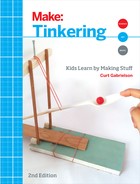Foreward
Tom Wolfe wrote a feature article in the December 1983 issue of Esquire magazine called “The Tinkerings of Robert Noyce.” Wolfe tells the very American story of a young man who grew up in Grinnell, Iowa, where he went to college before going on to MIT for graduate school. After school, Noyce headed to California in 1956 where he would invent the electronic future as a co-founder of Intel and shape what we now call the Silicon Valley.
Wolfe points out that Noyce had a typical Midwestern upbringing. He was a curious boy and a good athlete. When he was 13, he and his brothers read an article in Popular Science about a box kite that could lift a person off the ground. Noyce and his brothers set out to build and test that kite, asking themselves: would it work as they say? The boys would persist after several failures to get the kite up in the air. While Noyce was a good student, he almost got thrown out of college because of a prank. Fortunately, a teacher recognized Noyce’s talent and stepped in to help. That teacher introduced Noyce to transistors, while few others had even heard of them, and Noyce was curious enough to wonder how they might be used.
Wolfe wonders why a generation of great engineers and scientists came from such unexpected places. “Just why was it that small-town boys from the Middle West dominated the engineering frontiers? Noyce concluded it was because in a small town you became a technician, a tinker, an engineer, and an inventor, by necessity. “In a small town,” Noyce liked to say, “when something breaks down, you don’t wait around for a new part, because it’s not coming. You make it yourself.” Noyce was fortunate to have two kinds of education: informal as well as formal. Growing up, he learned a lot outside of school, as did others who grew up on farms and in families that knew how to use tools and how to fix machines. Formal learning often doesn’t make sense without informal learning. It offers too much theory without enough grounding in practice. Tinkering represents this kind of practical education that is often undervalued in formal settings.
Tinkering is not a field like chemistry or physics, yet it is worthy of study, particularly by those who want to engage kids as makers today. Tinkering is to making as running is to sports, as tapping your foot is to music. Tinkering is a process. It is an attitude. It is the means to fix, make, change, modify, and customize the world.
Curt Gabrielson and his colleagues at the Watsonville Environmental Science Workshop are pioneers in informal education. They are skilled practitioners, thoughtfully organizing learning experiences for children in a supportive context outside of school. In this book, Gabrielson shows how to create these meaningful experiences for students and how adults can be effective as facilitators of learning. Tinkering can help children build confidence in their own capabilities and explore the world they live in. All children deserve to have these opportunities, early and often, whether at home or even in school. What’s more, I believe that today’s children are demanding such learning experiences because they know how essential it is for them to grow as learners and become creative contributors to society. Like Noyce, many of them might already realize that you can’t just buy what exists but instead “you have to make it yourself.”
Think what it means to introduce more children to tinkering—more girls, more kids from different economic and ethnic backgrounds, more kids with different learning abilities, middle class kids who are bored in school and more middle-aged adults? If we can get more of us tinkering, who knows what tough problems we can solve, what discoveries we will find and what new things we will create?
—Dale Dougherty, 2013
